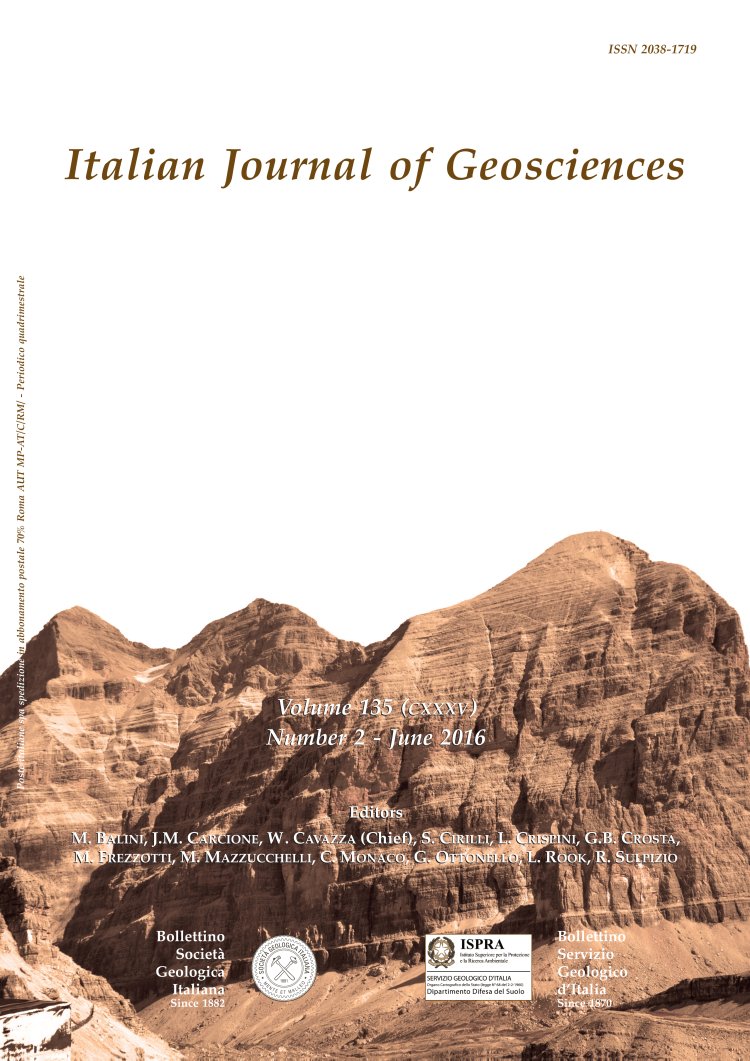
New evidence of wavefield polarization on fault zone in the lower NE slope of Mt. Etna
Francesco Panzera (*), Giuseppe Lombardo (*) & Carmelo Monaco (*)
(*) Dipartimento di Scienze Biologiche, Geologiche e Ambientali. Università degli studi di Catania. Corso Italia, 57 - 95129 Catania. Corresponding author e-mail: panzerafrancesco@hotmail.it; +390957195706.
Volume: 135 (2016) f.2
Pages: 250-260
Abstract
Fault zones are generally characterized by a damage zone, formed by highly fractured materials, that is seismically characterized by low velocity and rigidity compared to the host rock. Such geometrical setting, coupled with impedance contrast, lead to the development of local amplification of the ground motion and directional effects. In the present study, the results of measurements performed in the lower north-eastern area of Mt. Etna are shown and discussed. Ambient noise data were recorded and processed through the horizontal to vertical spectral ratio technique, setting into evidence directional effects and providing a direct estimate of the polarization angle as well. The data were recorded along and across the Piedimonte-Fiumefreddo fault system, a set of NE-SW trending extensional segmented faults, that is flanked by small conjugate segments and is accompanied by several WNW-ESE oriented minor faults and fractures of the Pernicana fault system.
Results point out that in most of the investigated sites the polarization effects are nearly perpendicular with respect to the minor faults, striking WNW-ESE. This highlight that the local extensional deformation field, related to the shear zone of the Pernicana fault system, plays an important role and it appears as the predominant one in the seismic response that characterize this tectonically complicated area.
Results point out that in most of the investigated sites the polarization effects are nearly perpendicular with respect to the minor faults, striking WNW-ESE. This highlight that the local extensional deformation field, related to the shear zone of the Pernicana fault system, plays an important role and it appears as the predominant one in the seismic response that characterize this tectonically complicated area.
Keywords
Get Full Text